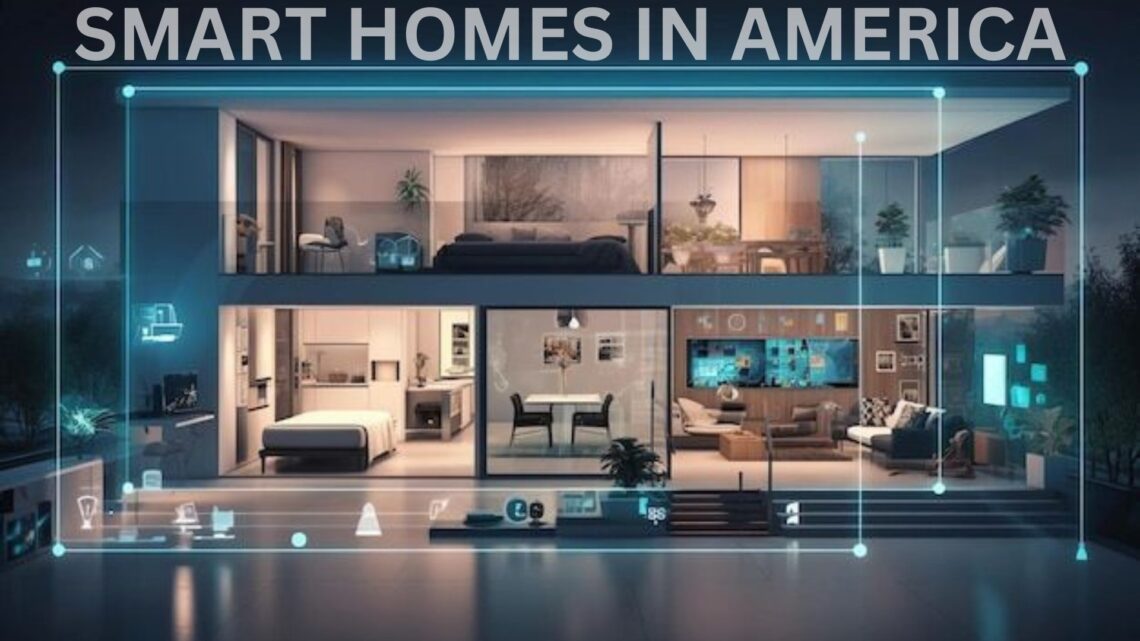In this article, we’ll explore the future of smart homes in America, the latest innovations driving the industry, and what homeowners can expect in the coming years. Whether you’re a tech enthusiast, a homeowner considering smart upgrades, or simply curious about the future of living, this guide will provide valuable insights into how smart home technology is reshaping everyday life.
Imagine waking up to the aroma of freshly brewed coffee, your blinds automatically adjusting to let in the morning light, and your thermostat setting the perfect temperature—all without lifting a finger. This is not a scene from a sci-fi movie but the reality of modern smart homes.
Smart home technology is transforming the way Americans live, offering convenience, energy efficiency, and enhanced security. With advancements in artificial intelligence (AI), the Internet of Things (IoT), and automation, the future of smart homes is more exciting than ever. In this article, we’ll explore upcoming trends, key innovations, and how smart home technology will shape the future of American households.
The Evolution of Smart Homes in America
From Basic Automation to AI-Powered Homes
Smart homes in America have come a long way from simple remote-controlled lights and thermostats. Today’s systems integrate voice recognition, AI learning, and real-time data analytics to enhance user experience.
- Early Days: Home automation started with simple programmable thermostats and lighting controls.
- Current Innovations: AI-driven assistants like Alexa, Google Assistant, and Siri now control entire home ecosystems.
- Future Possibilities: Predictive technology will anticipate needs based on behavior patterns and external factors like weather.
Key Trends Shaping the Future of Smart Homes in America

1. AI-Driven Personalization
AI and machine learning will continue to refine user experiences by predicting needs and automating tasks. Smart devices will learn routines, making personalized recommendations and adjustments automatically.
2. Energy Efficiency & Sustainability
Eco-conscious consumers are embracing smart home technology for sustainability. Features such as:
- Smart thermostats that optimize energy usage.
- Solar-powered smart homes that integrate renewable energy sources.
- Water-saving smart irrigation systems that reduce waste.
3. Enhanced Home Security
With increasing security concerns, future smart homes will integrate:
- AI-powered surveillance cameras with facial recognition.
- Biometric access controls like fingerprint and retina scanners.
- Real-time security alerts sent directly to homeowners’ smartphones.
4. Seamless IoT Connectivity
The Internet of Things (IoT) will create more interconnected smart homes where:
- Appliances communicate for efficiency.
- Wearable devices sync with home systems.
- Real-time data enhances automation.
5. Health & Wellness Integration
Smart homes will contribute to healthier lifestyles by incorporating:
- Smart air purifiers that monitor and adjust air quality.
- Fitness-tracking mirrors that provide workout feedback.
- Sleep-enhancing smart beds with biometric monitoring.
Challenges and Considerations
Privacy & Data Security
As smart homes collect more data, cybersecurity threats become a major concern. Future innovations must prioritize:
- End-to-end encryption for all smart devices.
- AI-driven security that detects and prevents cyber threats.
- User-controlled data privacy settings.
Cost & Accessibility
While smart technology enhances convenience, it remains costly for many homeowners. Solutions include:
- Government incentives for adopting energy-efficient smart home solutions.
- Affordable smart home bundles for budget-conscious buyers.
- DIY smart home systems that lower installation costs.
Interoperability Issues
Many smart devices run on different platforms, making seamless integration challenging. Industry leaders are working on:
- Universal smart home standards like Matter protocol.
- Cloud-based automation that connects all devices.
- Improved compatibility between brands.
The Future Smart Home: What to Expect?
1. Fully Automated Homes
Future homes will operate with minimal human intervention, adjusting lighting, temperature, and security based on AI-powered analytics.
2. Smart Cities & Infrastructure
Smart homes will integrate with smart city initiatives, optimizing energy use, reducing carbon footprints, and improving urban living.
3. Voice & Gesture-Controlled Interfaces
Beyond voice commands, smart homes will incorporate:
- Gesture-based controls for touchless operation.
- Holographic displays for real-time data interaction.
4. Robot Assistants for Home Management
AI-driven robots will handle household chores, providing assistance in cleaning, cooking, and even caregiving.
Final Thoughts
The future of smart homes in America is driven by innovation, convenience, and sustainability. As technology continues to evolve, homeowners will enjoy unprecedented levels of comfort, security, and efficiency.
To stay ahead, consider integrating smart technology into your home today. Whether it’s upgrading to a smart thermostat, investing in AI security, or adopting IoT-enabled appliances, the future is already here.
Are you ready to make your home smarter? Share your thoughts in the comments below!








Leave a Comment